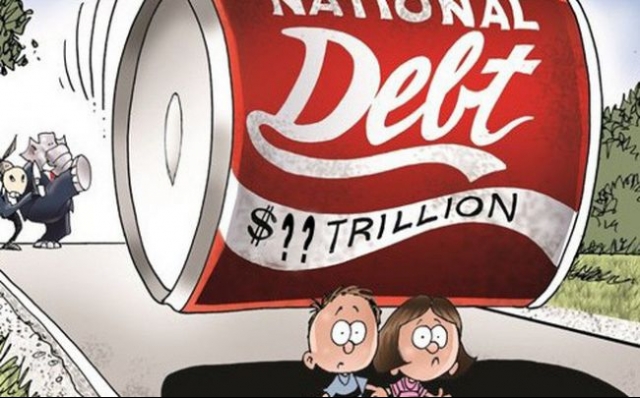|
Finance Ministry: Public debt to reach record high in
2017
Vietnam’s public debt will
reach a record high during the 2017-2018 period before gradually falling in
subsequent years, Mr. Nguyen Trong Nghia, Head of the Planning and Risk
Management Department of the Debt Management and External Finance Agency at
the Ministry of Finance told a meeting in Hanoi on May 31.

“Assuming the country’s GDP growth rate is around 6.7
or 7 per cent this year, public debt will reach 64.8 per cent of GDP,” he
said. “The amount will remain as high as 64.7 per cent in 2018 before falling
to 63.7 per cent by 2020.”
“The finance ministry and the government will adopt
solutions to restructure the State budget, ensuring public debt never
surpasses the 65 per cent ceiling set by the National Assembly,” he noted,
adding that the exact figure will change based on economic growth every year.
Vietnam will also not be able to borrow official
development assistance (ODA) at preferential interest rates and terms come
July.
Under a new scheme, the country will pay higher
interest rates on loans with shorter repayment terms, Ms. Nguyen Xuan Thao,
Deputy Head of the ministry’s Debt Management Agency told the
gathering.
“Since Vietnam officially became a middle-income
country in 2010, many donors have significantly reduced their preferential
treatment for loans to the country,” she explained.
Figures from the Debt Management and External Finance
Agency show that 98 per cent of Vietnam’s foreign loans in recent years were
in the form of ODA with preferential conditions. Interest rates averaged only
1 to 1.5 per cent per annum.
Vietnam should expect to pay more, and repay faster,
for loans from the World Bank, the Asian Development Bank, and Japan - its
three biggest donors - from July. The agency revealed last year that new
interest rates could rise by 2 to 3.5 per cent per annum while the terms
could be halved.
Vietnam’s foreign debt leaped 6.5-fold between 2001 and
2015, mainly due to weaknesses in managing and using loans.
Some debtors with government-guaranteed loans also lost
their repayment capacity, passing on the burden to the government.
At end-2016, Vietnam’s public debt stood at 63.7 per
cent of GDP, up from 62.2 per cent in 2015 and 50.1 per cent in 2011, while
government debt and foreign debt stood at 52.6 per cent and 44.3 per cent of
GDP, respectively.
The World Bank has forecast that Vietnam’s public debt
will climb to 64.4 per cent this year and 64.7 per cent in 2018.
The mounting debt will impose a steadily increasing
burden on Vietnam’s economy and make it ever harder to cut the budget
deficit, the bank said in a report released last year.
Under Vietnamese legislation, public debt includes
government debt, foreign debt, government guarantees, and debts owed by local
governments, while debts of by the central bank, State-owned enterprises, and
other State-run entities are excluded from the tally.
VN
Economic Times
|
Thứ Sáu, 2 tháng 6, 2017
Đăng ký:
Đăng Nhận xét (Atom)
Không có nhận xét nào:
Đăng nhận xét